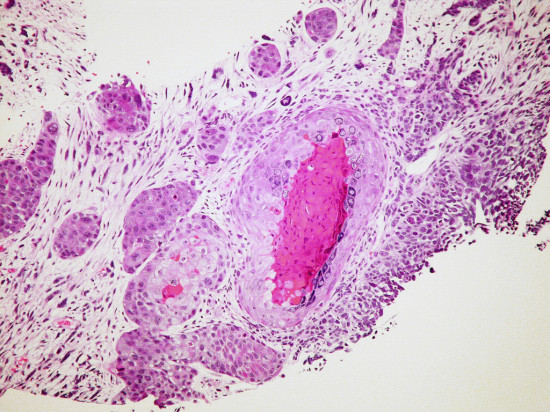
The US team, which consists of Johns Hopkins scientists Cristian Tomasetti and Bert Vogelstein, initially hoped to uncover why certain human tissues are millions of times more vulnerable to cancer than others, a fact that has been “recognized for more than a century” but has never been explained. The results of their analysis published in the prestigious journal Science, showed that “the lifetime risk of cancers of many different types is strongly correlated (0.81) with the total number of divisions of the normal self-renewing cells maintaining that tissue’s homeostasis.”
In other words, tissues that divide more frequently are more susceptible to cancer. Cancer itself, as defined by the World Health Organization, “arises from one single cell,” which is transformed “from a normal cell into a tumor cell…[as] the result of the interaction between a person’s genetic factors and three categories of external agents.” These “external agents” include physical carcinogens such as UV radiation, chemical carcinogens such as components of tabacco smoke, and biological carcinogens, such as infections from certain viruses, parasites or bacteria.
Returning to the Science report, Tomasetti and Vogelstein essentially explained why skin cancers, for example, occur more frequently in the population than bone cancers. Skin cells are constantly being regenerated and the rapid and constant division of these cells makes it more likely that random error or mutations are introduced into the genome to create a tumor cell. Thus, most cancers are simply due to “bad luck.”
Many scientists have praised the novelty of this study. Paul Knoepfler, a stem cell researcher at UC Davis, told U-T San Diego that, “I expect this paper will catalyze many new studies in this area…As both a cancer researcher and cancer survivor myself, I found the idea put forth by this paper…provocative.”
Another researcher, Tannishtha Reya of UC San Diego, told the newspaper in an email, “There is an entire field that has grown around the concept that cancers share a great deal with stem cells. For example, cancers can often originate in stem cells because they are long lived and can self renew indefinitely, cancers often hijack stem cell signals to drive aberrant self renewal…This paper in many ways provides enormous support for these concepts that have been developed in this field…It really supports the idea that understanding how stem cells function and how they can be hijacked to give rise to cancerous cells is critically important…”
Still, speaking to Science News, Bruce Ponder, a cancer researcher at the University of Cambridge in the UK, warned that, “It may not just be whether a mutation occurs…There may be other factors in the tissue that determine whether the mutation is retained” and whether it results in malignancy.
Altogether, this study illustrates that cancer is not always preventable. As Hans Clevers, a stem cell and cancer biologist at the Hubrecht Institute told Science News, “The average cancer patient…is just unlucky.” Still, more research should be done to determine if certain lifestyle patterns or environmental factors increase the chances that a person becomes “unlucky.” Douglas Lowry, deputy director of the National Cancer Institute in Bethesda, Maryland seems to agree when he told Science News that efforts to avert the disease must continue.
(Photo courtesy of Yale Rosen)
Comments